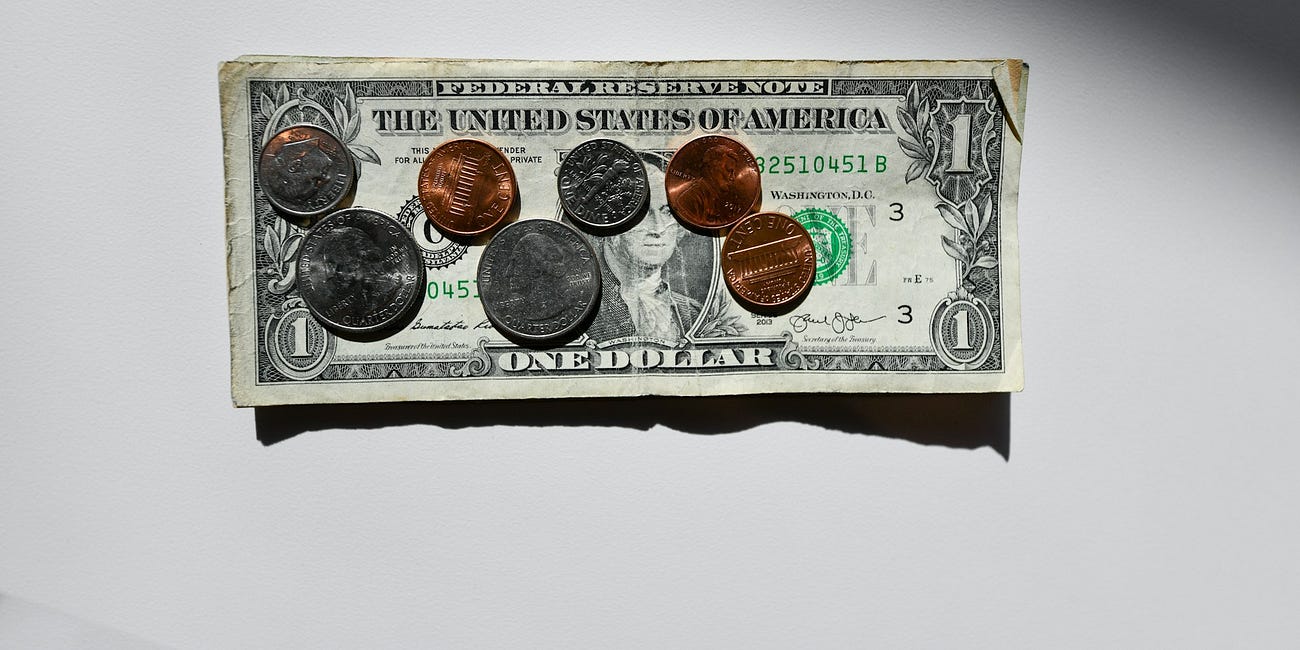What Is Gentrification and Why Is It a Problem?
Getting priced out of your own home is heartbreaking

We live in a society that idolizes wealth and privilege.
We see beauty in extravagence, in excess and luxury. The expense of an object determines its desirability, and the more expensive it is, the more value we place upon owning it.
Likewise with our own appearance; the more high-end the clothing, the more accessories and jewellery, the more brand-name items we have on our person the better. Even the products we use for beauty are judged based on the price tag attached.
In general — not on an individual level, of course — our society worships the rich.
In and of itself that’s not much of a problem. We all have our tastes and preferences, and some people just like the look and feel and quality of expensive stuff.
Fair enough.
But where it does become an issue is when we allow that fixation with wealth and privilege to become all-encompassing. When it replaces and displaces those inexpensive staples of our daily life that so many low-income, not-so-wealthy people depend on.
We might idolize the rich, but we can’t all be rich. And if the world only caters to them, then what happens to the rest of us?

I come from a very poor town out in a rural part of my province. It’s gorgeous — the Canadian side of the Appalachian mountains, with breathtaking ocean views and soaring sheer cliffs.
Autumn in my home town is like a vision of heaven.
But being a poor rural town, it’s a little run down. There are a lot of abandoned homes around the outskirts because nobody wants to move there, and it’s not worth selling your home if you plan to move away.
A lot of people just leave their houses to rot and go somewhere else where jobs are easier to come by.
That said, there are lots of little locally owned businesses. My grandfather owned the local deli for years, and to this day, people back home know who I am the second I say my last name. They know my whole dang family tree.
There aren’t many people who live around there. Everybody knows everybody.
Folks hang out at the local restaurants, places that are just as slapdash as the rest of town, but are full of friendly faces and the prices are easy on the wallet. Poor folks, older folks who are long since retired, and young folks visiting family — to them, these are familiar stomping grounds.
If you come from a low-income sort of place, you know exactly what I’m talking about. You’ve probably got similar hole-in-the-wall joints.
Fishing is a big part of life there, and the local tackle shop is owned by old neighbours of mine, related to a friend who I met in college.
I told you; small town.
Their prices match the local market. Their gear is cheap, but it works, and it makes life possible for us. People like us depend on places like that, priced for us and always available.
Now imagine if a high-end store moved in, one that catered only to wealthier tourists. Imagine if they advertised our small town as a tourist destination for fishing, and brought in loads of customers from abroad.
Sounds good, right? Sure, on paper. But let’s talk about what that looks like in reality.

During the COVID-19 Pandemic, a lot of wealthier people from populous cities like Toronto and Vancouver moved to my side of the country.
They wanted to escape the crowds to regions where the cost of living was lower, both to offset the financial issues brought on by a foundering economy and to try and avoid getting sick.
When they got here, they brought expectations with them. And with those expectations came a change in the scenery.
Our little hole-in-the-wall restaurants and food trucks were no good. They wanted their high-end dining experiences and instagram-worthy coffee shops.
And they could pay for them, so they got them.
A lot of smaller businesses struggled in the aftermath of COVID, and many of them shut down which left lots of open real estate in the city’s shopping centres.
To capitalize on a new, wealthier market, new businesses bought them out. Expensive sushi restaurants, artisinal cafés, bakeries and breweries, and expensive clothing boutiques took the town by storm.
And the lower-income folks lost a lot of their old, reliable, cheap hangouts and shopping places downtown.
When those places close down, the people who frequented them leave and a new market takes over. This is expected. The new market also has different tastes in what the town ought to look like — here, a local historic town square went from grass and trees to pavestones in the space of one summer.
A place I spent many an hour of my childhood watching plays and listening to music from local buskers is now a cement-covered walking path and all of the shade trees are gone.
It was a rambling green space by the river before. Now it is regimented and stiff. Carefully structured. All of its personality and character erased.
In microcosm, this is an example of what sociologist Ruth Glass called ‘Gentrification.’ Wealthier people move in, and they displace and push aside the local population.
When we get priced out — both at the restaurant and in costs of living — we have to go somewhere else. Our home is no longer built for us.

Now, you might be thinking to yourself; “Hang on. Isn’t it good that the local infrastructure and businesses are getting upgraded? Doesn’t that help people?”
You could argue that, but gentrification is a double-edged sword. It has positives and negatives, pros and cons.
One pro is that, like this hypothetical reader suggested, gentrification can improve infrastructure. Things that need funding but get deprioritized because they’re in a ‘low-value neighbourhood’ might actually get attention once a wealthier population moves in.
In 2015, researchers from Harvard and Stanford Universities published a fascinating report on the impact that wealthy inhabitants have in their municipalities.
They explain, essentially, that the squeaky wheel gets the grease — but only if it has money. Or, perhaps more accurately to their conclusion, only rich wheels bother to squeak in the first place.
“Who holds power in local politics? Taking advantage of the recent explosion in data about U.S. cities, we have investigated a particular kind of political power: the ability for citizens to request and receive services from local government. In the city of Boston, it is higher-income areas that more frequently take advantage of this option.”
They go on to explain that they’re not entirely sure why this is the case, citing a possible lack of trust in the government or a lack of coordination and information about how to request services.
There are a number of things that could be behind this lack of interest.
Given that this specific study used city snow-plowing services as their subject, I might argue that people in lower-income neighbourhoods are probably more able to clear their own snow.
Generally speaking, the poor are often better equipped and used to solving problems at the ground level by necessity, whereas wealthier people tend to be willing to pay others to do it for them.
This could promote a culture of ‘handle it yourself’ versus an expectation of service from others.
Low-income neighbourhoods might not bother calling in to the city for help with their problems, especially if they don’t know that they can or what number is even open to them. Some poorer communities may face barriers that wealthier communities simply don’t have to deal with.
This is not a moral judgement on my part, by the way. If I could afford to hire a house cleaner, I would! I’d love to have somebody help my arthritis-riddled self and my family keep this place tidy.
I can’t afford to, so we do it ourselves and I deal with the discomfort. This also means I have less time in my day than your average wealthy person who is able to hire staff to free up hours of work for them.
With that in mind, there’s also the possibility that shame might play a role in such an unwillingness to reach out for help. There is a lot of stigma and disregard aimed towards people in poverty. The same people who express feeling humiliated when their friends see them going to the local soup kitchen probably don’t want to make a fuss and call the city for assistance.
So, going off of this one study it isn’t very clear. But there’s another area of life that might provide us a clearer picture of how gentrification impacts a neighbourhood.
Schools.

My school was held together by duct tape and a prayer.
That was the running joke when I was in Middle School — and judging by what I saw when maintenance guys were working on the pipes, it was an honest fact.
Our school had those walls on wheels that could be pulled aside to let the crew work without tearing anything down. They were also used as blockades when the school held dances, preventing us from sneaking away and getting up to shenanigans down the hall.
The wheels didn’t lock; I don’t know who they thought they were thwarting.
That old school is long gone now, torn down and replaced by a much fancier building to serve the much more affluent inhabitants that have taken over that neighbourhood.
The city could afford to do that because the price of housing in the area rose with the renovations and construction the new folks paid for. Higher income neighbourhood means higher property taxes.
Property taxes make up a big chunk of the financing for public schools.
Now, not all provinces in Canada use property tax for school funds, but many do — and in the U.S., it used to be the standard. So, in general, the nicer your local neighbourhood, the better and more up-to-date your schools will be.
Thankfully, this is no longer necessarily the case — or it won’t be in the future. The model of half-and-half funding, wherein local sources make up half the costs of public school and the federal government fills in the rest, is becoming more common.
This is good, because it limits the impact of gentrification on educational outcomes. It goes without saying that if your school is underfunded and falling apart, your chances of squeezing a good education out of it aren’t great.
School District Funding and the Problem Of Charter Schools
Have you ever wondered why some schools are better funded than others?
So, rich folks move in, upgrade the schools and everybody benefits. Right?
Sadly, no. This is where the negative impacts of gentrification show up.
It’d be nice if low-income families could benefit from improvements like this, but if you’ve been paying attention, you might already be able to guess why they don’t.
That’s right. Home values, rent prices and propety taxes go up.
And that, sadly, means that local families wind up getting priced out.

Earlier in this article I mentioned the idea of displacement.
In the context of gentrification, displacement refers to the pricing-out and subsequent migration of local families who can no longer afford the cost of living in the places they once called home.
People in poverty are already struggling to make ends meet and live within their means. Gentrification makes that damn near impossible.
The cost of rent and home ownership skyrockets, small businesses close down and get replaced by expensive shopping centers, and the local area is developed to benefit the new arrivals and exclude the old.
Infrastructure is upgraded, downtown areas get cleaned up and made to look ‘nice’ — destroying public parks in the process, I’m still mad about that — but people like me don’t get to benefit from them.
You might even say that kicking us out is part of making the place prettier. Trump would certainly say so.
That ties into the issue of poverty shame that I mentioned before.
When towns and cities are gentrified, huge portions of the population get cut out of those local economies. I’ve written about related issues before, such as Food Deserts and Hostile Architecture.
What is Hostile Architecture, and Why is it Screwed Up?
Imagine having no home for a night. No apartment, no house, no safe reliable shelter. It’s a frosty night in late fall, maybe early winter.
This not only harms the economy of those towns — when you reduce local buying power, you reduce revenue — but it also hurts people.
Poor people are just that. We’re people. Human beings. We’re just trying to get by and enjoy life like everybody else. And when we get forced out of our own neighbourhoods, our own home towns and forced to leave, it sucks.
When we lose all of the local flavour and culture that we know and love, and it’s all replaced by expensive businesses aiming to attract and capitalize on wealth, we’re left in the lurch.
It hurts.
We might idolize the rich, but we can’t all be rich. And if the world only caters to them, what happens to the rest of us?
Solidarity wins.




I keep watching Canadian news to see if Ottawa can manage to pull the economy up and away from the dependency of the U.S. It's going to be a hard struggle. I'm cheering for you though.
The U.S. is tumbling faster down the mountain like an avalanche. I don't think we'll recover from this next recession like before. The cultural divisions are now to great to overcome with the current politicians. I'm going to hang on as long as I possibly can and see what happens. Meanwhile, I'm scouting for an exit plan should I lose everything and need another place to go.